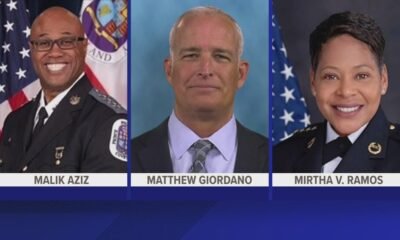early voting
Deadline Dilemmas: When Signatures Meet Their Stubborn Denials

This report is based on an investigation by Votebeat in collaboration with the Arizona Center for Investigative Reporting, organizations dedicated to election integrity and transparency in voter access.
Nate Kennedy rushed to a Motor Vehicle Division office in Arizona in 2021, eager to secure his driver’s license and register to vote. Upon submitting his mail ballot in November 2022, he discovered that his hasty signature would cost him his chance to cast a vote in the midterm elections.
Election officials rejected Kennedy’s ballot due to concerns about the match between his submitted signature and the one on file, which he had scribbled hurriedly on an electronic pad. Weeks later, the disappointment set in. “I was so irritated. It made absolutely no sense to me,” he expressed.
As mail-in voting became standard in Arizona, election officials increasingly depend on signature verification to validate ballot submissions. In response to allegations of widespread mail-in voter fraud, strict signature verification protocols have been implemented, particularly in Maricopa County, which plays a central role in election scrutiny.
According to a detailed analysis by Votebeat and the Arizona Center for Investigative Reporting, the signature verification process has led to a significant increase in ballot rejections, particularly from younger and newly registered voters. Between 2020 and 2022, Maricopa County witnessed a tripling in ballots rejected for signature mismatches, jumping from 586 in 2020 to 1,798 in 2022. Over 3,000 ballots were rejected statewide solely due to mismatched signatures during this midterm election.
The findings indicate that new and younger voters are often subjected to signature mismatches because they typically have fewer signatures on record. Many register by signing an electronic pad, which can distort their actual signature styles. Additionally, voters unaffiliated with any political party bear the brunt of these stringent verification processes, as they lack the support from party organizations to rectify signature issues.
Sandra Lines, a retired forensic document examiner, criticized the validity of comparing signatures from different sources: “It’s just not a valid thing to do.” Training for county workers does not equate to the rigorous forensic analysis applied in criminal investigations, further complicating the verification process.
The impact of these electoral practices is significant in a state where close elections can be swayed by a small number of ballots. A bipartisan attempt to introduce ID requirements for mail-in voters, proposed by conservative lawmakers, narrowly failed in the last election cycle. Advocates argue for improvement within the current system instead of drastic changes.
As the state gears up for upcoming elections, officials emphasize the seconds needed for voters to verify signatures following a rejection. Maricopa County has a structured cure process, allowing voters to address signature discrepancies even after the polls close. Nonetheless, many voters are still uninformed about their ballot status and can miss notification efforts due to delays in mail delivery.
The investigation revealed that about 36% of rejected ballots for signature mismatches came from voters aged 18 to 24, highlighting the need for better signature collection technologies. Efforts to educate voters will be essential to ensure that their signatures are accurately represented when casting ballots.
Changes to the signature verification process continue to be a contentious issue. While some favor automated systems for accuracy, others assert the importance of human oversight. Maricopa County’s signature verification rating is considerably lower than some other counties, drawing both praise and criticism.
Political parties play a critical role in helping voters fix signature issues. The Democratic effort in the recent attorney general race resulted in approximately 3,400 voters curing their ballots, which may have affected the narrow margins in electoral outcomes.
Looking ahead, Arizona aims to address these systemic challenges while ensuring that all eligible voters can make their voices heard. Enhanced communication regarding signature verification could prove vital for safeguarding electoral participation.
Jen Fifield from Votebeat and Hannah Bassett from the Arizona Center for Investigative Reporting contributed to this report.


















